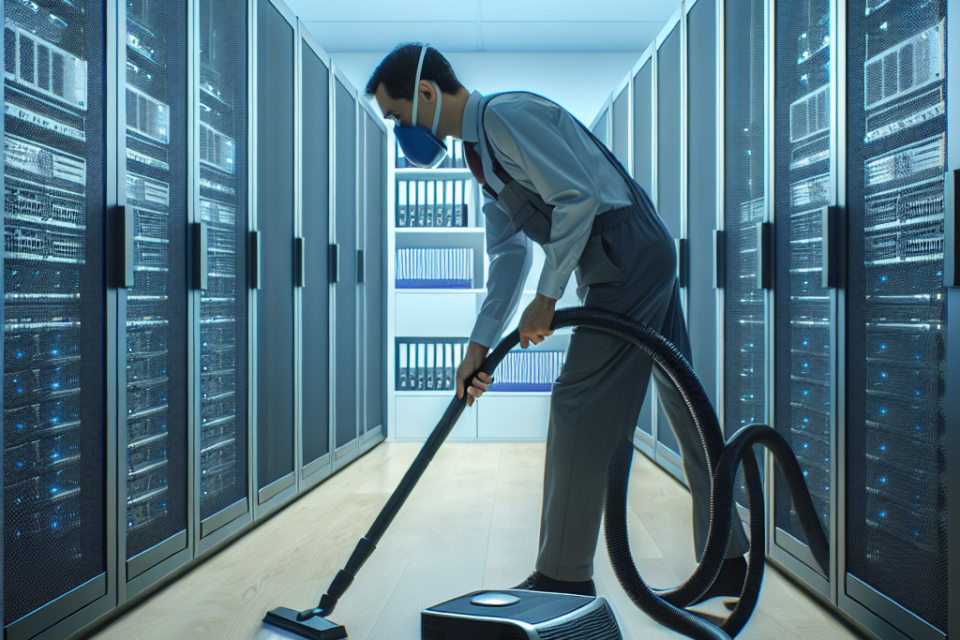How do I manage dust in a server rack?

Dust can be a silent killer for your server equipment. Accumulating within the server rack, dust can cause overheating, hardware failure, and performance degradation. Understanding how to properly manage and minimize dust is crucial for maintaining a reliable and efficient server environment. In this article, we’ll delve into several effective strategies to keep your server rack dust-free and operational.
Common Sources of Dust
Dust in server racks typically originates from various sources. Identifying these sources is the first step in managing dust effectively. Common sources include:
- Office Environment: Open office spaces can introduce dust into the server room.
- Hardware and Components: New hardware installations and components can carry dust into the rack.
- Foot Traffic: Increased movement and activity in and out of the server room contribute to dust accumulation.
- HVAC Systems: Inefficient or dirty HVAC systems can spread dust throughout the server room.
| Source of Dust | Description |
|---|---|
| Office Environment | Open office spaces can introduce dust into the server room. |
| Hardware and Components | New hardware installations and components can carry dust into the rack. |
| Foot Traffic | Increased movement and activity in and out of the server room contribute to dust accumulation. |
| HVAC Systems | Inefficient or dirty HVAC systems can spread dust throughout the server room. |
Effective Strategies to Manage Dust
1. Regular Cleaning
Consistent cleaning is essential to control dust. Develop a cleaning schedule that includes:
- Weekly Dusting: Use microfiber cloths or electrostatic dusters to remove surface dust from the server rack.
- Monthly Vacuuming: Use a vacuum cleaner with a HEPA filter to clean hard-to-reach areas and remove settled dust.
- Quarterly Deep Cleaning: Conduct a comprehensive cleaning session, including all components, cables, and the surrounding area.
2. Air Filtration Systems
Installing air filtration systems can significantly reduce dust accumulation. Consider:
- High-Efficiency Filters: Use HEPA filters in HVAC systems to trap dust and particulates.
- Dedicated Air Purifiers: Place air purifiers with HEPA filters in the server room to continuously clean the air.
3. Sealed Server Racks
Using sealed server racks protects equipment from dust. Options include:
- Enclosed Racks: Fully enclosed racks prevent dust from entering while allowing proper ventilation.
- Filter Kits: Add dust filter kits to rack doors and panels to capture dust particles.
4. Positive Air Pressure
Maintaining positive air pressure in the server room helps in pushing out dust-laden air. This can be achieved by:
- Adjusting HVAC Settings: Ensure the HVAC system is configured to maintain positive air pressure within the server room.
- Sealing Gaps and Cracks: Seal any gaps, cracks, and openings in the server room to prevent dust from entering.
5. Strict Access Controls
Limit access to the server room to minimize dust introduction. Implement policies such as:
- Access Restrictions: Only authorized personnel should have access to the server room.
- Protective Gear: Require personnel to wear protective clothing, shoe covers, and hairnets when entering the server room.
6. Regular Equipment Maintenance
Maintaining your server equipment is crucial for dust management. This includes:
- Routine Inspections: Regularly inspect equipment for dust buildup and clean as necessary.
- Component Cleaning: Use non-static brushes or compressed air to clean components and fans.
- HVAC Maintenance: Ensure your HVAC system is serviced and filters are replaced regularly.
Monitoring and Maintenance
Consistent monitoring and maintenance are key to effective dust management. Tools and practices to consider include:
- Environmental Monitoring: Use environmental sensors to track dust levels, temperature, and humidity in the server room.
- Maintenance Log: Keep a log of cleaning and maintenance activities to ensure regularity and address issues promptly.
- Audits and Assessments: Conduct periodic audits to assess the effectiveness of your dust management strategies and make improvements as needed.
Conclusion
Managing dust in a server rack requires a combination of regular cleaning, proper equipment maintenance, and strategic environmental control. By implementing the strategies outlined in this article, you can protect your server equipment from dust-related issues, ensuring optimal performance and longevity.
Stay proactive in your approach to dust management and adapt as needed to maintain a dust-free server environment. This will ultimately save you time, money, and headaches in the long run.
